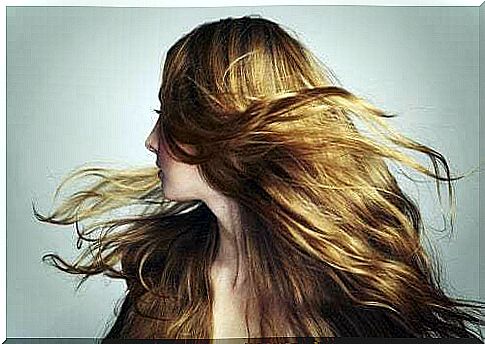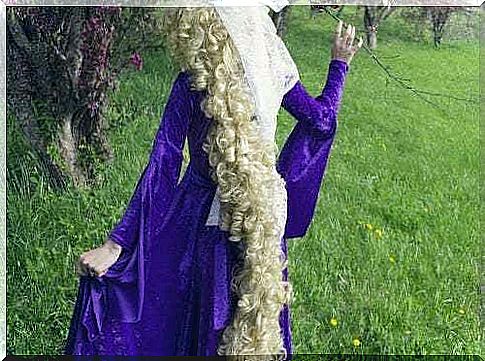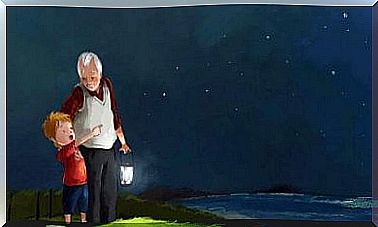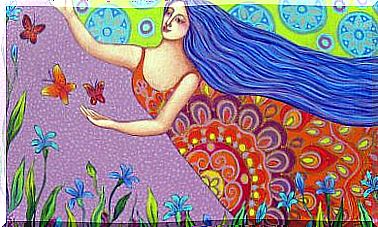Rapunzel Syndrome: Symptoms And Treatment

Rapunzel syndrome is a very rare disease that occurs with the presence of a mass of hair in the stomach or intestines due to voluntary and compulsive ingestion of the same (trichophagia).
This disorder is associated with trichotillomania and causes severe gastrointestinal upset. In this article we describe trichotillomania and ringworm, the symptoms of these disorders and the most effective interventions.
Rapunzel syndrome is a disorder that mainly affects young women ; the causes are not entirely clear, but it is thought to be associated with low self-esteem, anxiety and depression, as well as the aforementioned trichotillomania and other mental disorders.
Rapunzel Syndrome Symptoms
A trichobezoar is a mass that forms in the stomach or intestines following the ingestion of hair. Ringworm, however, does not always cause this mass.
The time between the moment the person begins to ingest the hair and the moment the symptoms begin to manifest varies. Some symptoms that may indicate the presence of a mass of hair in the stomach:
- Slimming.
- Symptoms of intestinal obstruction.
- Nausea, vomiting, feeling full.
- Diarrhea.
- Halitosis.
- Iron deficiency anemia.
- Blood in the stool.
- Alopecia associated with trichotillomania.
Diagnosis is difficult, as patients often deny eating their hair. The presence of any of these symptoms can be an indicator of ringworm.
Alopecia can indicate that the person suffers from a disorder that prompts them to pull their hair, precisely trichotillomania, which is sometimes followed by ingestion. These clues could guide the diagnosis.
Definitive diagnosis can be obtained by stool analysis, ultrasound, MRI or gastroscopy. The latter is the best technique for confirming the presence of trichobezoar.
Trichotillomania and its symptoms
Trichotillomania leads to compulsive hair pulling. The person is particularly relentless on the scalp, eyebrows and eyelashes. The dynamics can include different rituals, such as the choice of hair / hair, manipulation and ingestion.
Pulling out their hair gives these people relief when they experience strange and unpleasant sensations. It is generally not painful, but it can cause hair loss, often very noticeable.
This disorder affects women most often and can occur at any age. Its association with ringworm is much more common in women. It is a chronic and intermittent disorder, which can improve with proper treatment.
Rapunzel Syndrome Treatment
The first step could be to apply a treatment for trichotillomania : by limiting the urge to pull your hair, it will also reduce its ingestion.
The most indicated treatment for trichotillomania is habit reversal therapy by Azrin and Nunn. The principles on which it is based are:
- Awareness. It involves describing negative behavior (hair pulling), antecedents and consequences to promote awareness of the subject.
- Competitive response. It is about training and performing behavior that is incompatible with the problematic attitude.
- Motivation. Motivate the patient to do whatever he or she has learned by examining the drawbacks of the problem habit, seeking social support, and giving public presentations on the results achieved.
- Generalization. Apply the entire process in different areas of the patient’s life.
Exposure with response prevention may also be used. It consists in exposing the patient to the unpleasant sensations that precede the gesture of pulling the hair and that block the execution of the response (pulling the hair). The aim is to get the person used to the unwelcome sensation without having to emit a compulsive response.
Treatment of Rapunzel syndrome also includes dissolving the hair mass, chemically or enzymatically, or extracting the trichobozoars by endoscopy or surgery. This will be followed by medical treatment of the possible and serious complications derived.

Curiosities about Rapunzel syndrome
It was first described by the surgeon Vaughan ED and his collaborators in 1968. Think, however, that in the 12th century BC it was common practice to ingest animal trichobezoars because they were thought to have medicinal properties.
Rapunzel syndrome is a very rare disease and just over 100 cases have been reported worldwide. The name of this ailment comes from the tale of the Brothers Grimm, in which Princess Rapunzel, trapped in a tower, threw her long hair down the window to allow the prince to climb and save her.
The appearance of a trichobezoary resembles Princess Rapunzel’s hair and can be in the shape of a braid or ponytail. Regardless of the color of the hair ingested, the color of the trichobezoar is always black and may also contain traces of undigested food. The masses of hair can have different sizes, shapes and weights, and reach 3 kg.









